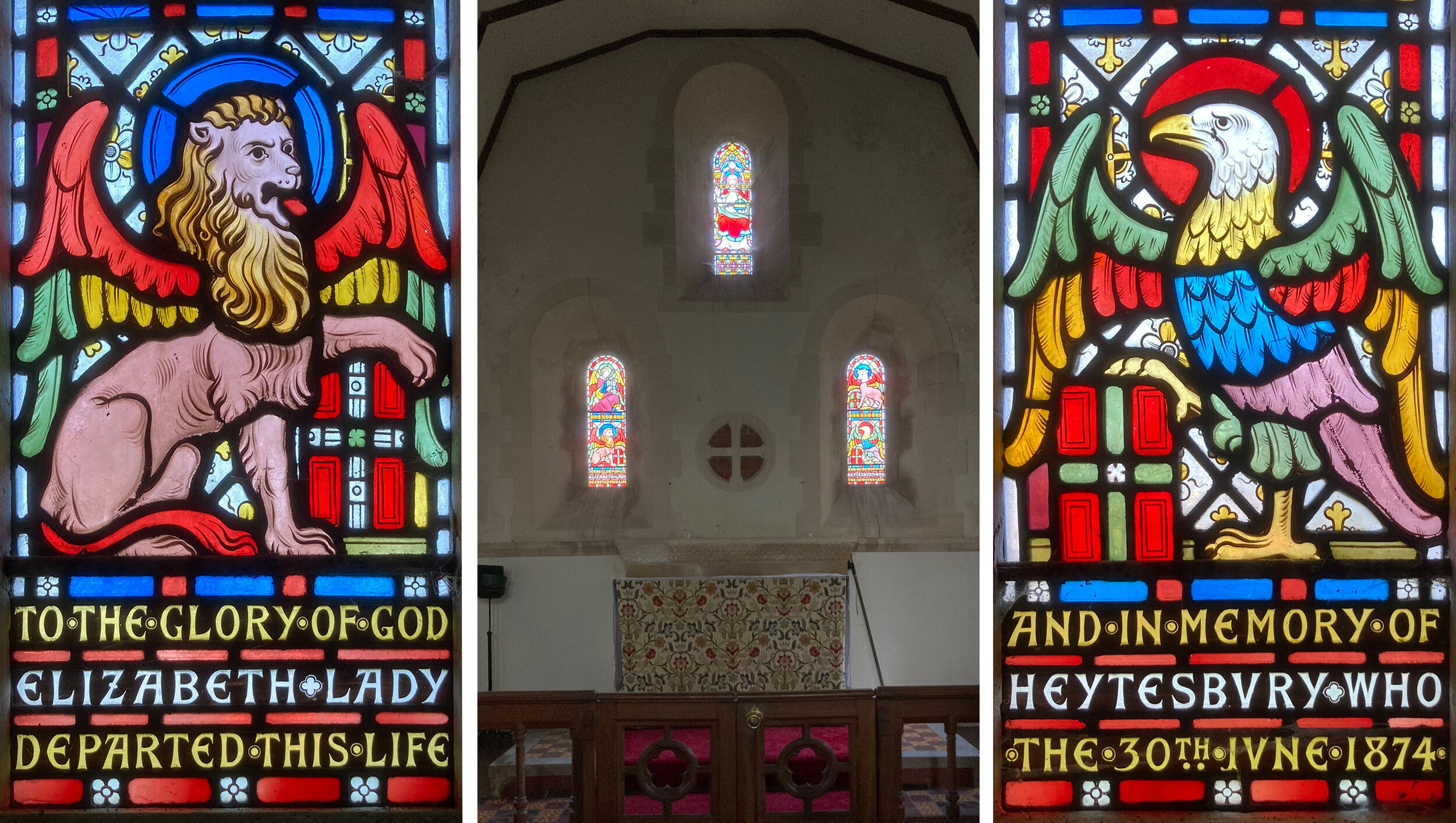Left, Attic Windows, patchwork quilt. Right, Attic Windows, stained glass version, 420 x 460 mm
Attic Windows has been always one of my favourites in the patchwork quilt book I’ve had since I was young. It’s got that essential simplicity and a design that is perfectly suited to stained glass as well as patchwork. Because there are only two different shapes in the design you can cut lots of different coloured squares and trapezoids and then decide where the colours are going to go, it’s always more fun if you have room to move and change while you’re making something.
The stained glass version of Attic Windows was made for my grandson’s first birthday last month, I thought the windows, which also look like building blocks, were ideal for carrying the letters in his name, date and location. I was already up to 135 pieces of glass after cutting these and so decided to give them a plain pale blue background (below).
155 glass pieces cut and laid on the template
I used different colours for each row of blocks and each row of the trapezoids around them. To add variation, so that you get dark colours surrounding light as well as light surrounding dark, the trapezoid colours run vertically and the square colours run horizontally.
All the squares are made of flashed glass, meaning there is a layer of coloured glass which can be sandblasted off through a stencil to reveal the clear glass layer underneath. Some flashed glass is made of two layers of coloured glass, like the red on blue for FRANCIS and the red on yellow for WARD (below right). All the trapezoids are made of streaky glass in subtle colours (below left) to frame the bold, bright blocks.
Left, Lettering pieces removed. Right, Lettering blocks sandblasted.
Left, Leading underway. Right, Soldered panel.
My favourite stained glass stage to do is the leading (above left), with these tiny pieces I used up old scraps of the thinnest lead. When the panel had been leaded, soldered and laid on the bench (above right) you can most clearly see the shape of the pattern and a resemblance to the quilt that inspired it.
Left, Cementing the panel. Right, Detail of finished panel in the sun.









